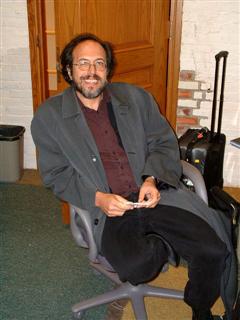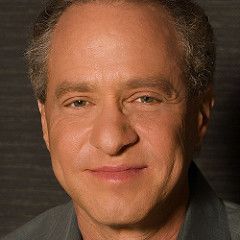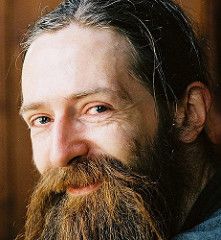 Lee Smolin is said to believe (according to personal communication from Danila Medvedev who was told about it by John Smart. I tried to reach Smolin for comments, but failed) that global catastrophe is impossible, based on the following reasoning: the multiverse is dominated by those universes that are able to replicate. This Self-replication occurs in black holes, and in especially in those black holes, which are created civilizations. Thus, the parameters of the universe are selected so that civilization cannot self-destruct before they create black holes. As a result, all physical processes, in which civilization may self-destruct, are closed or highly unlikely. Early version of Smolin’s argument is here: http://en.wikipedia.org/wiki/Lee_Smolin but this early version was refuted in 2004, and so he (probably) added existence of civilization as another condition for cosmic natural selection. Anyway, even if it is not Smolin’s real line of thoughts, it is quite possible line of thoughts.
Lee Smolin is said to believe (according to personal communication from Danila Medvedev who was told about it by John Smart. I tried to reach Smolin for comments, but failed) that global catastrophe is impossible, based on the following reasoning: the multiverse is dominated by those universes that are able to replicate. This Self-replication occurs in black holes, and in especially in those black holes, which are created civilizations. Thus, the parameters of the universe are selected so that civilization cannot self-destruct before they create black holes. As a result, all physical processes, in which civilization may self-destruct, are closed or highly unlikely. Early version of Smolin’s argument is here: http://en.wikipedia.org/wiki/Lee_Smolin but this early version was refuted in 2004, and so he (probably) added existence of civilization as another condition for cosmic natural selection. Anyway, even if it is not Smolin’s real line of thoughts, it is quite possible line of thoughts.
I think this argument is not persuasive, since the selection can operate both in the direction of universes with more viable civilizations, and in the direction of universes with a larger number of civilizations, just as biological evolution works to more robust offspring in some species (mammals) and in the larger number of offspring with lower viability (plants, for example, dandelion). Since some parameters for the development of civilizations is extremely difficult to adjust by the basic laws of nature (for example, the chances of nuclear war or a hostile AI), but it is easy to adjust the number of emerging civilizations, it seems to me that the universes, if they replicated with the help of civilizations, will use the strategy of dandelions, but not the strategy of mammals. So it will create many unstable civilization and we are most likely one of them (self indication assumption also help us to think so – see recent post of Katja Grace http://meteuphoric.wordpress.com/2010/03/23/sia-doomsday-the-filter-is-ahead/)
But still some pressure can exist for the preservation of civilization. Namely, if an atomic bomb would be as easy to create as a dynamite – much easier then on Earth (which depends on the quantity of uranium and its chemical and nuclear properties, ie, is determined by the original basic laws of the universe), then the chances of the average survival of civilization would be lower. If Smolin’s hypothesis is correct, then we should encounter insurmountable difficulties in creating nano-robots, microelectronics, needed for strong AI, harmful experiments on accelerators with strangelet (except those that lead to the creation of black holes and new universes), and in several other potentially dangerous technology trends that depend on their success from the basic properties of the universe, which may manifest itself in the peculiarities of its chemistry.
In addition, the evolution of universes by Smolin leads to the fact that civilization should create a black hole as early as possible in the course of its history, leading to replication of universes, because the later it happens, the greater the chances that the civilization will self-destruct before it can create black holes. In addition, the civilization is not required to survive after the moment of “replication” (though survival may be useful for the replication, if civilization creates a lot of black holes during its long existence.) From these two points, it follows that we may underestimate the risks from Hadron Collider in the creation of black holes.
Continue reading “Natural selection of universes and risks for the parent civilization” »

 The summer 2010 “
The summer 2010 “ Also speaking at the H+ Summit @ Harvard is
Also speaking at the H+ Summit @ Harvard is  Lee Smolin is said to believe (according to personal communication from Danila Medvedev who was told about it by John Smart. I tried to reach Smolin for comments, but failed) that global catastrophe is impossible, based on the following reasoning: the multiverse is dominated by those universes that are able to replicate. This Self-replication occurs in black holes, and in especially in those black holes, which are created civilizations. Thus, the parameters of the universe are selected so that civilization cannot self-destruct before they create black holes. As a result, all physical processes, in which civilization may self-destruct, are closed or highly unlikely. Early version of Smolin’s argument is here:
Lee Smolin is said to believe (according to personal communication from Danila Medvedev who was told about it by John Smart. I tried to reach Smolin for comments, but failed) that global catastrophe is impossible, based on the following reasoning: the multiverse is dominated by those universes that are able to replicate. This Self-replication occurs in black holes, and in especially in those black holes, which are created civilizations. Thus, the parameters of the universe are selected so that civilization cannot self-destruct before they create black holes. As a result, all physical processes, in which civilization may self-destruct, are closed or highly unlikely. Early version of Smolin’s argument is here: